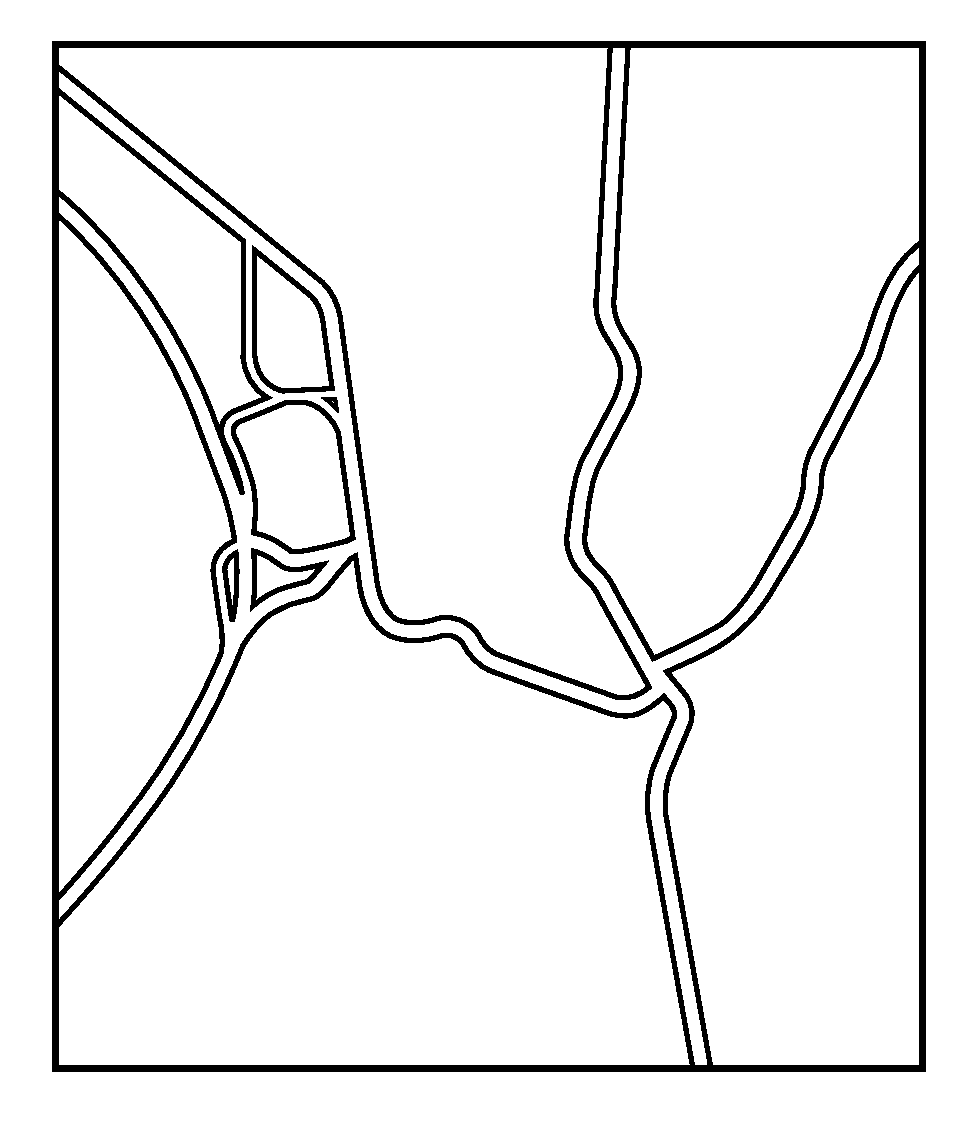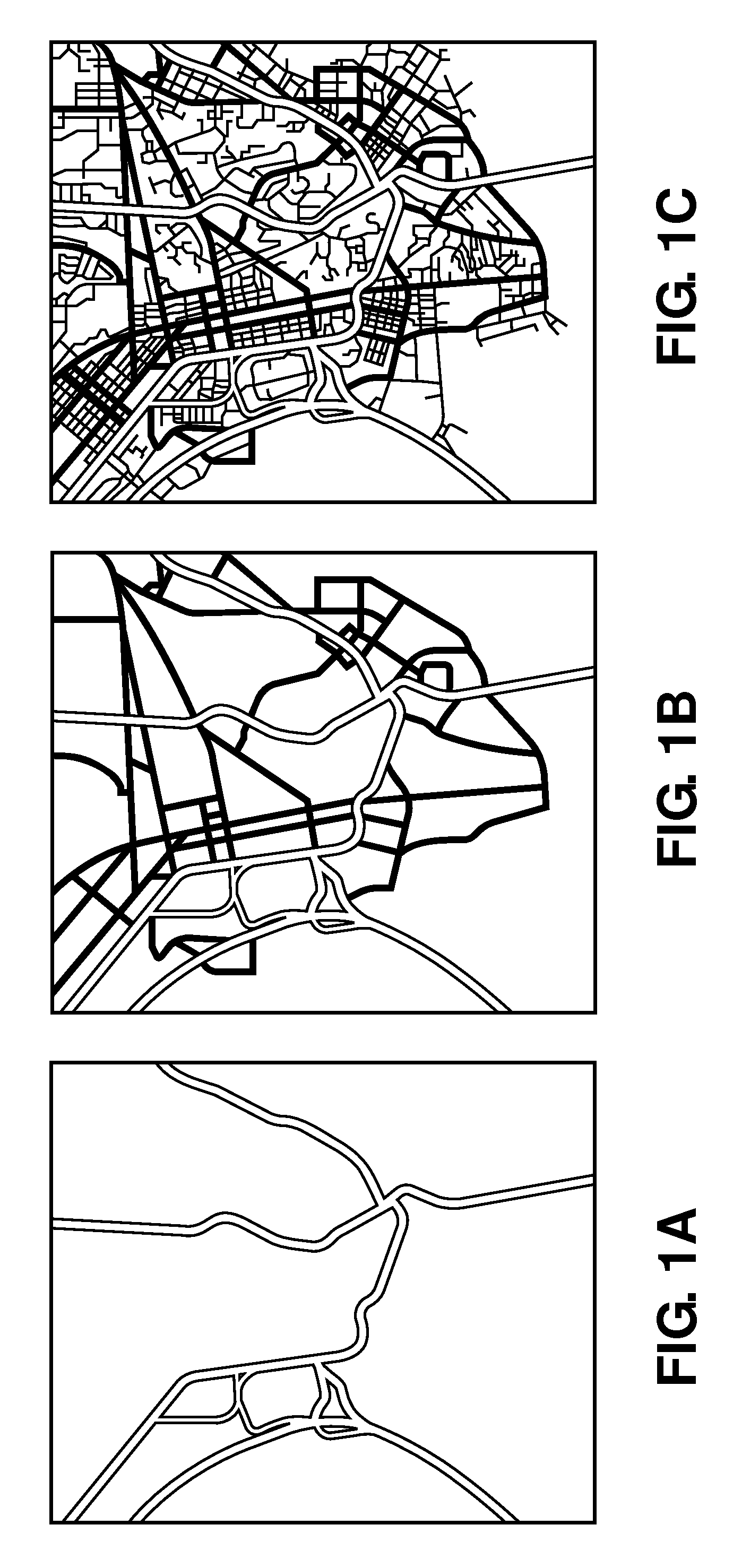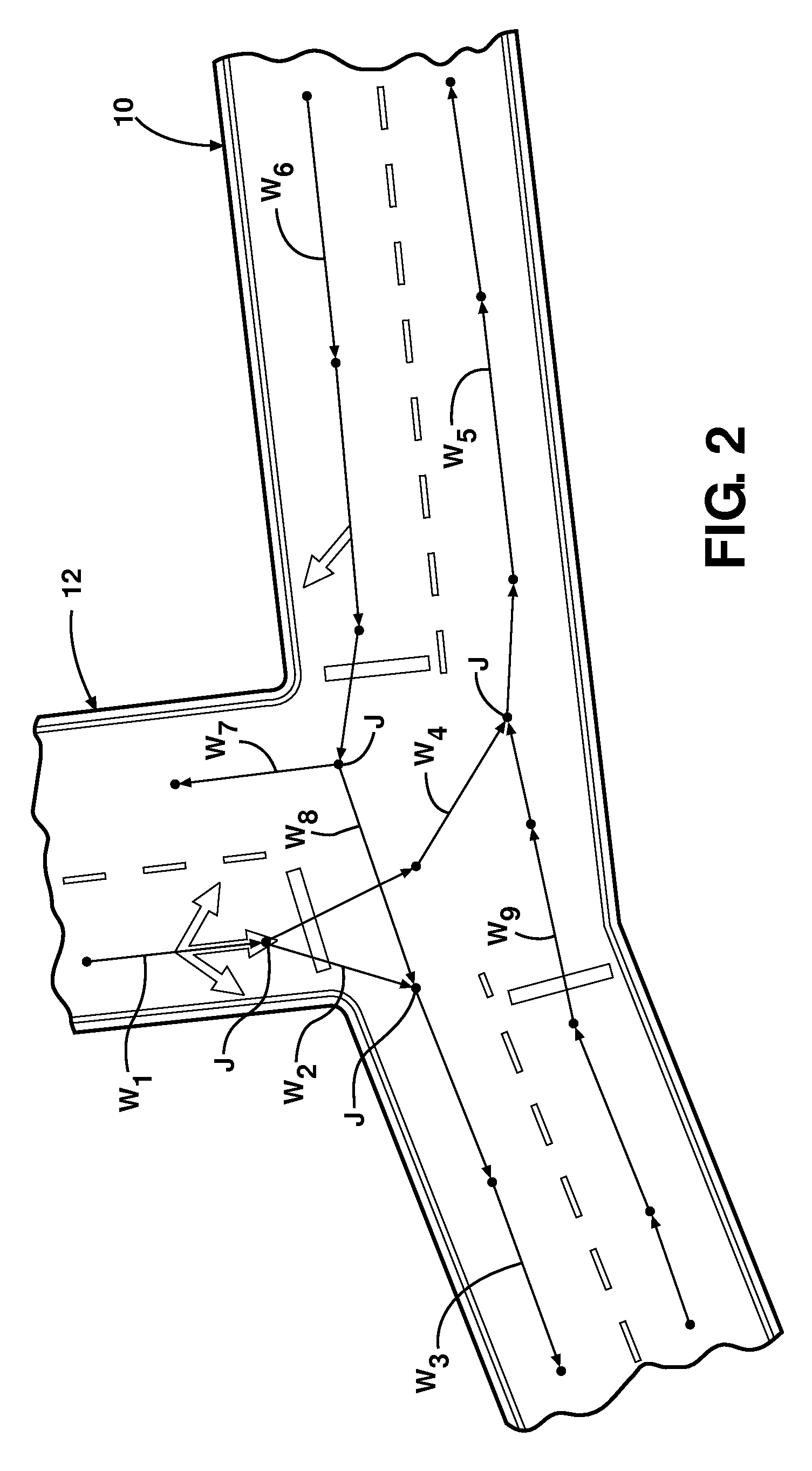Incremental map generation, refinement and extension with GPS traces
- Summary
- Abstract
- Description
- Claims
- Application Information
AI Technical Summary
Benefits of technology
Problems solved by technology
Method used
Image
Examples
Embodiment Construction
[0023]Referring to the figures, wherein like numerals indicate like or corresponding parts throughout the several views, the subject invention is described schematically in FIG. 4. Here, a plurality of probes 14 are depicted as GPS-enabled personal navigation devices such as those manufactured by TomTom NV (www.tomtom.com). However, any suitable device with GPS functionality may be used to generate probe data points, including handheld devices, mobile phones, PDAs, and the like. The probe data points are collected and stored in a probe data table 16 or other suitable database or repository. The existing digital vector map, in this example a previously created digital map, is contained in a table 18. Of course, the digital vector map 18 can exist as a database or in other suitable form. Trace lines are generated from the rough probe data in table 16 as an initial step. A new line is selected from the probe data table at step 20. The selected line is matched to the digital vector map ...
PUM
 Login to View More
Login to View More Abstract
Description
Claims
Application Information
 Login to View More
Login to View More - R&D
- Intellectual Property
- Life Sciences
- Materials
- Tech Scout
- Unparalleled Data Quality
- Higher Quality Content
- 60% Fewer Hallucinations
Browse by: Latest US Patents, China's latest patents, Technical Efficacy Thesaurus, Application Domain, Technology Topic, Popular Technical Reports.
© 2025 PatSnap. All rights reserved.Legal|Privacy policy|Modern Slavery Act Transparency Statement|Sitemap|About US| Contact US: help@patsnap.com



